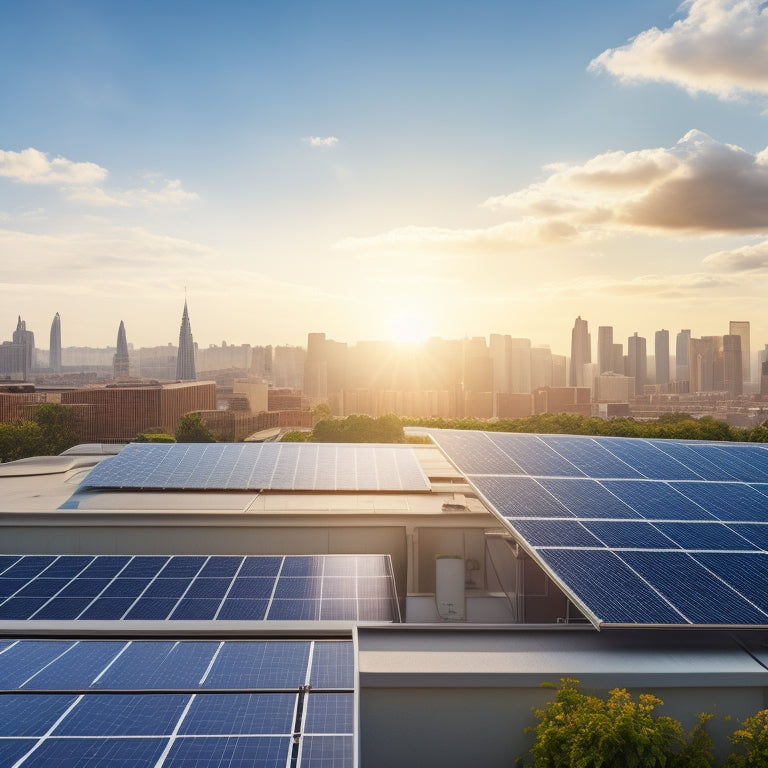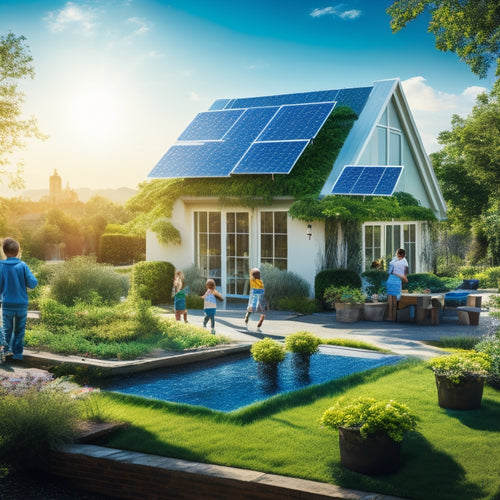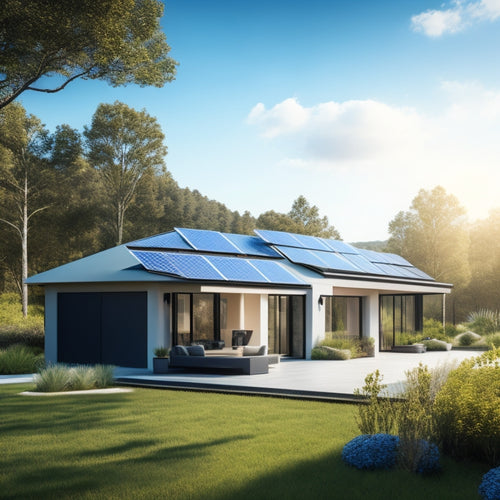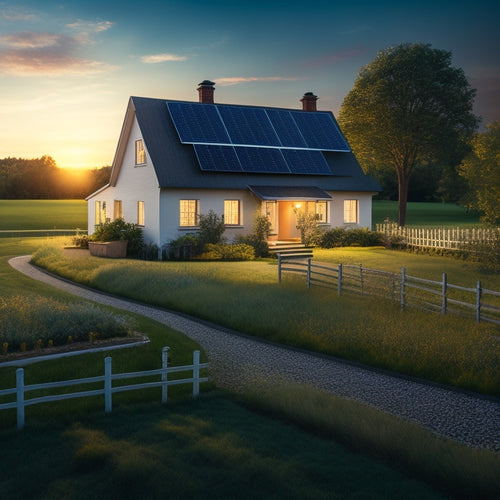
3 Best Commercial Solar Panel Installation Options
Share
When considering commercial solar panel installation, you'll want to maximize roof space efficiency by strategically placing panels around obstructions and adjusting their layout for best energy production. Next, orient panels to capture maximum sunlight, adjusting tilt and angle based on latitude and climate. Finally, invest in a customized system design solution that integrates seamlessly with your building's unique energy needs and local building codes. By prioritizing these three key factors, you'll be well on your way to a highly efficient solar panel system - and exploring these factors further will reveal even more opportunities to optimize your installation.
Key Takeaways
• Maximize roof space efficiency by strategically planning panel layout around obstructions, using a mix of panel sizes, and adjusting for unique roof features.
• Optimize panel orientation by considering latitude, climate, and seasonal adjustments to capture maximum sunlight and ensure peak energy production.
• Ensure tailored system design solutions that consider energy needs, roof size, and local building codes for seamless integration and efficient system performance.
• Conduct thorough energy audits to design a customized system that meets commercial energy demands and optimizes ROI.
• Implement advanced system monitoring to track real-time performance, identify areas for improvement, and optimize energy production and ROI.
Maximizing Roof Space Efficiency
When designing a commercial solar panel installation, you'll want to maximize your roof space efficiency by strategically placing panels to avoid obstructions and optimize energy output.
Roof obstructions, such as skylights, vents, and HVAC units, can greatly reduce the usable space on your roof. To overcome these space constraints, consider using a combination of panel sizes and orientations to fit around obstructions.
You may also need to adjust the panel layout to accommodate roof features like chimneys or roof drains. By carefully planning your installation, you can minimize wasted space and guarantee that your solar panel system operates at peak efficiency.
Optimal Panel Orientation Strategies
To maximize energy production, you'll need to strategically orient your solar panels to capture the best amount of sunlight, taking into account the specific latitude and climate of your location. Best panel orientation involves adjusting the tilt and angle of your panels to optimize energy output.
| Panel Tilt | Seasonal Adjustment |
|---|---|
| 30° to 40° | Adjust tilt 10° to 15° every 3 months |
| 20° to 30° | Adjust tilt 5° to 10\u00b every 2 months |
| 10° to 20° | Adjust tilt 2° to 5\u00b every month |
Customized System Design Solutions
You can benefit from customized system design solutions that consider your specific energy needs, roof size and complexity, and local building codes to guarantee a seamless integration of solar panels into your existing infrastructure.
This tailored approach ensures maximum energy output and minimizes potential installation hurdles. By conducting thorough energy audits, you'll gain a detailed understanding of your energy consumption patterns, allowing for a more efficient system design.
Moreover, advanced system monitoring capabilities enable real-time performance tracking, enabling you to identify opportunities for optimization and maximize your return on investment. With customized system design solutions, you'll have complete control over your commercial solar panel installation, ensuring a successful and profitable shift to renewable energy.
Frequently Asked Questions
What Is the Average Lifespan of a Commercial Solar Panel System?
You can expect a commercial solar panel system to last around 25-30 years, with some panels lasting up to 40 years, thanks to their durability, ensuring a long system longevity and significant returns on your investment.
Can Solar Panels Be Installed on Flat or Irregularly Shaped Roofs?
You'll face unique installation challenges and roof obstacles, such as skylights, vents, and uneven surfaces, when installing solar panels on flat or irregularly shaped roofs, requiring careful planning and specialized equipment.
How Often Do Commercial Solar Panels Require Maintenance or Repair?
Imagine a well-oiled machine, humming with efficiency. You'll want to keep your commercial solar panels running smoothly with regular inspections, scheduled maintenance, and occasional panel cleaning to guarantee peak performance, which is monitored closely to prevent any hiccups.
Are There Any Government Incentives for Commercial Solar Installations?
You can capitalize on government incentives for commercial solar installations, such as tax credits and renewable grants, which can greatly offset the upfront cost, making your investment more viable and profitable.
Can Existing Buildings Be Retrofitted With Solar Panel Systems?
As you weigh the feasibility of retrofitting, consider this: can a century-old gem be rejuvenated with modern sustainability? Yes, you can retrofit existing buildings with solar panels, but be prepared to tackle retrofitting challenges, ensuring energy efficiency, compliance with building codes, and preserving structural integrity, all while respecting historical preservation.
Related Posts
-

Solar Energy Benefits for Sustainable Living
Solar energy provides numerous benefits for sustainable living that you can't overlook. By switching to solar, you'll...
-

Eco-Friendly Energy Storage Systems for Houses
Eco-friendly energy storage systems for your house let you capture and use renewable energy efficiently. You can choo...
-

Cost-Effective Solar Solutions for Rural Homes
Cost-effective solar solutions can alter your rural home by enhancing energy independence and slashing utility bills....


